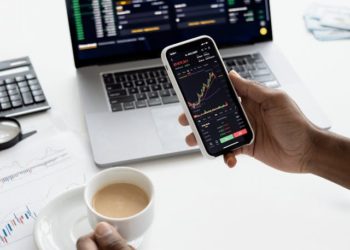The shift towards remote work has dramatically altered the way businesses operate. With employees working from various locations, it’s no longer possible for managers to physically observe their teams, making it challenging to maintain productivity and accountability. In this new environment, top employee monitoring software has emerged as a valuable tool for businesses to ensure that work is done effectively, deadlines are met, and resources are used efficiently.
The Role of Employee Monitoring in Remote Work
Flexible working from home has benefits, including flexibility and improved lifestyle, but also drawbacks. Employers’ primary concern is the productivity decline that occurs when employees are out of the employer’s sight. Some employees would find it hard to work and organize themselves since there would be no organizational structure like that of an office. This problem is solved by employee monitoring since it provides insight into daily tasks and work etiquette about time usage by employers.
Time control programs usually track several activities, such as the time spent on different projects, applications, and websites accessed. Finding bottlenecks, improving processes, evaluating, and giving real-time feedback is possible. For instance, if an employee is browsing non-work related websites through a significant part of the working day, the data can be used to discuss how the focus can be increased. Similarly, if an employee is repeatedly efficient, it can be used as the basis for praising and motivating him.
A primary advantage of employee monitoring is that such a process can reveal tendencies that may be invisible to supervisors. For example, it can demonstrate when the productivity rates are high for specific workers and help the employers to organize work more efficiently. Instead of assuming when employees are most likely to be most effective, the manager can employ evidence-based decisions that are good for everyone. Such information is especially useful in teamwork, especially when working remotely, where communication may be slow, and thus, some problems may not be easily detected.
Ensuring Accountability with Employee Monitoring
Apart from productivity, accountability is another important factor when working remotely. When employees are allowed to work independently, there must be tools allowing the business to control their task performance and work progress. Supervision is a crucial aspect of accountability because an employee monitoring system produces clear and transparent documentation of an employee’s work performance.
This openness fosters the employer and the employee rapport because all parties understand the expectations and standards set. Moreover, monitoring software is helpful because it offers a more realistic way of managing a company. After all, the manager does not rely on their intuition. This minimizes the chances of misunderstandings or disagreements concerning workloads and performance, as records are well-documented and retrievable.
To the employees, awareness that their work is being monitored could be a good incentive for them to work harder and meet the set timelines. However, much balance is required when undertaking these activities. Monitoring of employees should not be done in a way that makes it seem like you are always on your employees’ necks, thus denying them the freedom to unleash their creativity. It should be employed to enforce responsibility and offer help where it is needed from time to time.
When done correctly, employee monitoring can also shield employees from burning out. From the information, managers can identify whether an employee is overworking or overwhelmed and, in turn, change the situation before the affected employee reaches a point of frustration. Thus, monitoring can be useful not only for the company’s objectives but also for checking the state of employees’ health.
Ethical Implementation of Employee Monitoring
On one hand, the effectiveness of the mentioned tools is obvious, but at the same time, the importance of ethical usage of them can not be overestimated. This is one of the most significant components of this process: transparency. Employees should be informed about what is monitored, how the data is going to be used, and why the monitoring is taking place. Assurance over the purpose and the gains to be made out of monitoring can go a long way in addressing any perceived violation of employee rights and promoting equity.
Furthermore, monitoring software should be used for certain goals, such as increasing efficiency or protecting specific data, rather than just spying on employees. Organizations must be mindful of employees’ rights and trust, especially when working from home when employees bring their private lives to the workplace.
When used as an aspect of a more comprehensive strategy that seeks to enforce accountability and productivity, firms can frame the remote working style as efficient as the office style. It is hoped that the information generated from monitoring tools will be utilized constructively to promote a healthy working environment rather than as a punitive mechanism.
Conclusion
In the current climate of increasing remote work, employee surveillance is an effective solution for controlling efficiency and transparency. If implemented and deployed honestly and fairly, monitoring software proves helpful in determining how employees manage their time and perform their duties. The latter helps businesses reveal problems, provide focused assistance, and introduce order and responsibility into work processes.











































































